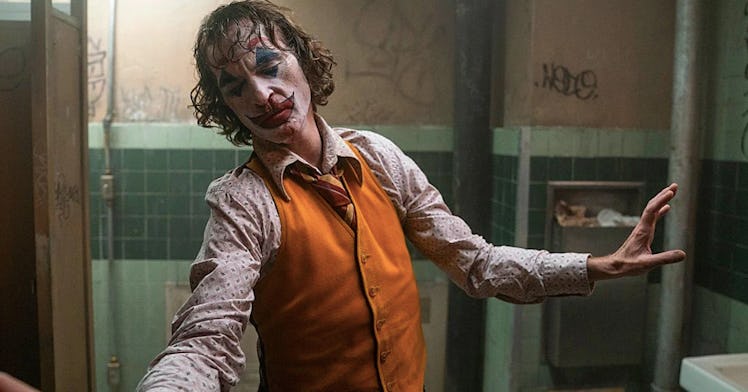That Crazy ‘Joker’ Ending, Explained
Want to dance with the devil in the pale moonlight? Again?

The ending of the new not-a-superhero-movie, Joker has some serious ties to a few Batman movies and stories you might fondly remember. Though the Todd Phillips-directed, Joquin Phoenix-starring flick is decidedly divorced from any kind of shared continuity of other confusing DC superhero movies, in its ending, it specifically seems to create all of them. Here’s how to think about that ending, and why that Zorro Easter egg kind of matters.
Spoilers ahead for the ending of Joker. You’ve been warned.
Back in 1989, Tim Burton caused a little bit of a stir in the comic-book nerd community when his film Batman, revealed that Jack Nicholson’s Joker was the one who killed Batman’s parents. But now, at the end of Joker, essentially the same thing happens. Joquin Phoenix’s Joker doesn’t kill Bruce Wayne’s parents outright, but he does create a lawless situation that basically causes it to happen. Toward the end of the movie, this version of the Joker has several Joker minions, and a guy in a Joker mask kills Thomas and Martha Wayne, in front of 10-year-old Bruce Wayne. Heavy stuff, but also kind of weird, considering the only time it was implied the Joker was responsible for Batman’s creation was in the 1989 Burton film. Because Joker takes place in 1981, this would also put a contemporary Bruce Wayne in his late forties, which, honestly, could totally explain Ben Affleck’s Batman.
Obviously, Joker isn’t trying to connect to any version of Batman in specific, but, instead is making a kind of confusing artistic statement that also acts as a prequel to Batman’s entire origin story. If you only care about comic-book connective tissue, this makes Joker exactly like that weird show Gotham only with good acting and much shorter.
Joker also briefly floats the idea that the Joker himself might have been Bruce Wayne’s half-sibling, though that idea is shutdown fairly obviously later in the movie. Still, in not one, but two scenes, young Bruce Wayne is terrorized by clowns, which really makes you wonder why he decided to take the superhero name “Batman” when “Clown Killer” would have been more fitting.
Ah, but there’s that sneaking Zorro: The Gay Blade reference. In 1981, there was a movie called Zorro: The Gay Blade, and in Joker, it’s the movie the Wayne family is leaving when tragedy strikes. Starting with Frank Miller comic book The Dark Knight Returns, Bruce Wayne’s parents were killed after a showing of The Mark of Zorro, which was a 194o version of the masked badass with a sword. Since then, Batman writers and artists have made a pretty big deal out of the Zorro thing, and it’s subsequently appeared in several comic book flashbacks that depict the murder of Thomas and Martha Wayne. Even the opening scenes of Batman Vs. Superman in 2016 had the Wayne family walk by a poster advertising The Mark of Zorro.
Credit: Warner Bros
Why does any of that matter? Well, by sticking in the ’80s version of Zorro, the movie Joker seems to be making a fairly big acknowledgment that yes, at the end of the day, the only glimmer of light in this film is that this is a creation story about Batman. The fact that young Bruce Wayne saw a masked hero all in black on the big screen the day his parents were killed in front of him probably has a big influence on his fashion choices later in life. There won’t be a sequel outright to Joker, but on some level, Batman’s profound hatred of this villain could, if you squint a certain way, take on new meaning. By having the Joker be the cause of Batman’s creation, the film gestures as the innocence of a child yearning for a world of heroes, and not villains.
So, what’s the sequel to Joker? Maybe it’s all of our childhood memories: remembering when we were still kids, running around pretending we saw the Bat-Signal.